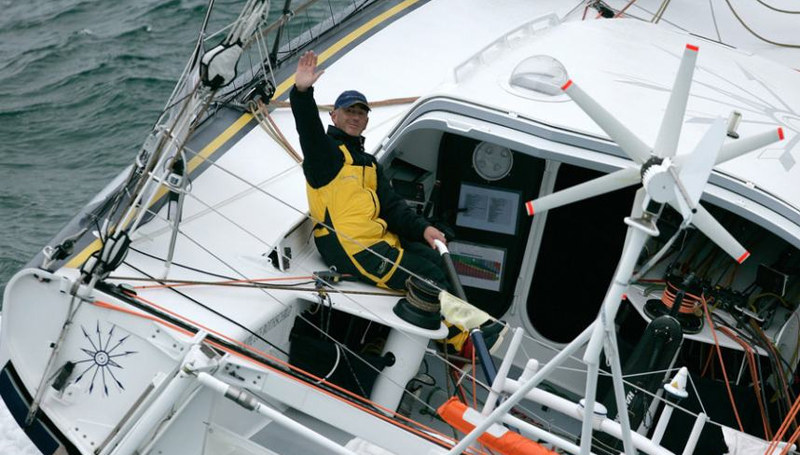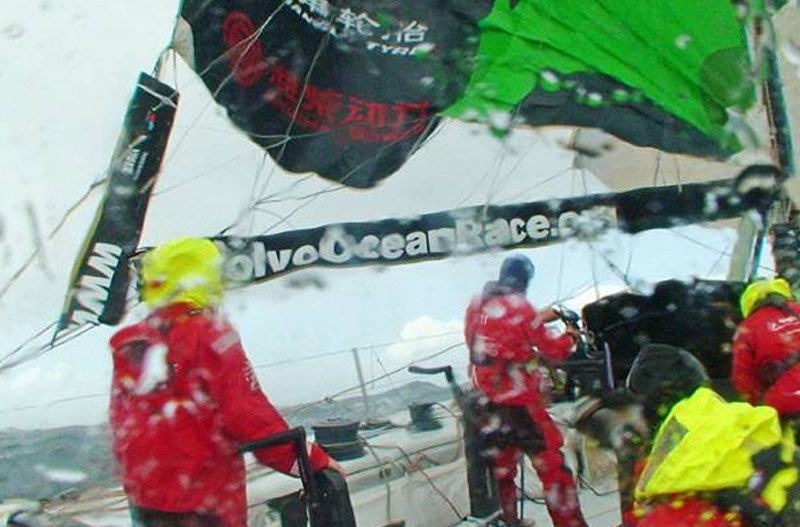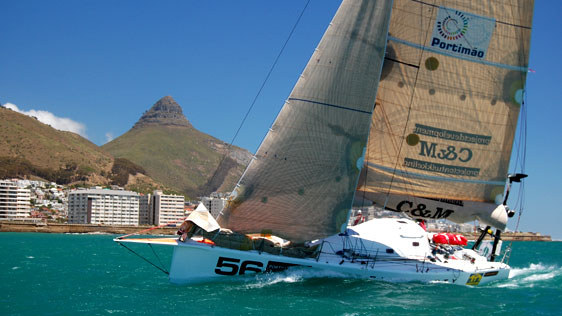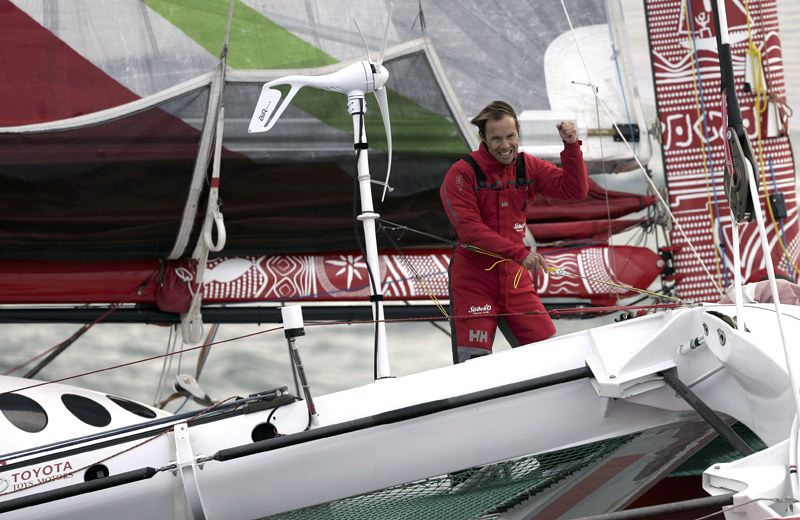
No Time Like the Present
We’ve heard it said that the average sailboat leaves its slip just 15 times a year. If you haven’t hit that magic number yet, there’s still time. Coordinate a raft-up with friends for Thanksgiving, sail over to Sam’s for a hot toddy or start rigging your boat with holiday lights in preparation for one of the Bay Area’s many lighted boat parades. If you’ve limited yourself to just watching from shore as all those brightly decorated boats crammed with fun-loving crew go by, make this the year you finally join in. Load the boat with snacks and hot drinks, invite your beer can crew, family and friends, and crank the Buffett. Trust us — the real fun is on the water!
Below is a list of Bay Area lighted boat parades — email LaDonna if your club’s parade isn’t listed.
- Dec. 6 — Oakland/Alameda Estuary, starts at 5:30 p.m. Info, www.lightedyachtparade.com.
- Dec. 6 — Petaluma River, begins at the marina at 5:30 p.m. Info, (707) 762-4697 or www.petalumayachtclub.com.
- Dec. 6 — Santa Cruz YC in the south harbor, starts at 5:30 p.m. Info, www.scyc.org/lbp.
- Dec. 6 — South Beach YC, from McCovey Cove to the Ferry Building. Info, www.southbeachyachtclub.org
- Dec. 6 — Vallejo Harbor. Info, www.vyc.org or (707) 643-1254.
- Dec. 6 — Stockton, starts at 5 p.m. Info, www.deltaboating.com/mwyc.html or (209) 477-7653
- Dec. 13 — Sausalito YC, starts at 6 p.m. Info, www.syconline.org.
- Dec. 13 — Pillar Point (Half Moon Bay), starts at 6 p.m. Info, www.hmbyc.org or (650) 725-2120.
- Dec. 13 — Marina Bay Yacht Harbor, starts at 6 p.m. Info, www.marinabayyachtharbor.com.
- Dec. 19 — St. Francis YC, along the Cityfront from Pier 39 to Ft. Mason. Info, Scott Marx.
- Dec. 20 — San Rafael Canal, starts at 5:30 p.m. Info, www.sanrafaelyachtclub.org or (415) 300-4510.
Eight Bells – George Olson
We’re sorry to report that George Olson lost a long battle with cancer last weekend. He died on November 12 in Santa Cruz, surrounded by wife Lyn Neale, his two grown children Adrian and Kristina, and other family. George was 68.
Olson was a true renaissance man — a jack of many trades and master at more than a few. Antique car restoration, model railroading, surfboard maker, boatbuilder, landsailer and amusement park ride designer were just a few of the passions during his life. We don’t know what sort of a mark he left on most of those pursuits, but the one he left on sailing is huge and indelible: George was a key ingredient in the primordial soup that gave the world ultralight sailboats.
George Olson was born in San Diego to a Navy family. He moved around quite a bit during his childhood, living variously in San Pedro, San Francisco, Hawaii and Japan — where he learned to sail at the Navy base yacht club at age 14. His father finally retired in the mid-’50s and the family settled in Santa Cruz. George got involved in local sailing right from the start. At 19 he had built his first boat, a trimaran. A decade later, he he was working as a hod carrier — the guy who carries bricks up the ladder to the mason — by day, while spending the weekends doing crazy things like ‘turboing’ Cal 20s with bowsprits and outsized rigs. One day, low on money as usual, he and some buddies got the idea of building the longest-waterline hull possible to which they could attach a Cal 20 keel, rudder and rig. Two young boatbuilders named Ron and John Moore took notice of the result, a crazy-fast 24-footer named Grendel, and a few years later, the design was tweaked to become the Moore 24.
Later, George went to work for Bill Lee where he helped build boats and design tooling. While delivering Merlin back from the ‘77 TransPac, George, Don Snyder and Dennis Bassano put their heads together and birthed yet another Santa Cruz ULDB stalwart. They called the design the SOB 30 (for their initials), named the resultant boat Pacific High, and later went into partnership producing it as the Olson 30. Later still, he enlarged the design and the Olson 40 was born.
Through it all, George never finished his formal education and never got a naval architecture diploma. He was a ‘natural’ with an intuitive sense of how wind and wave interacted — with an artist’s eye for designing pretty boats. In a Latitude interview way back in 1979, in response to a question about what calculations he used before changing the size and shape of the Olson 30 keel from that of Pacific High, he said, “I just look at boats. Everybody asked me what the NACA numbers are for the foil sections — that’s a book of aircraft section foils where you can get all these drag ratios and laminar flows out of it. Well, I can’t understand any of it. I tried, but it’s way over my head.”
George’s ever fertile imagination eventually drifted away from sailboats (although he remained involved in landsailers and model boats), but his legend lives on. We’ll have more about Olson’s life and stories in the December issue. And we invite you to share yours for possible inclusion. Please forward your remembrances of George Olson to John Riise. But don’t delay, we have only a few more days until our December deadline.
Workin’ It for a Living

A long-held tradition among West Coast sailors is to pay a visit to the gritty dance bar called Squid Roe shortly after arriving at Cabo San Lucas. Notorious for its infectious dance mix, Jell-O shots and lascivious behavior, the place inspires even middle-aged couch potatoes to grind away on the sweat-splattered dance floor for hours. As you might imagine, the Squid is much more fun when you’re with a group — like when the Baja Ha-Ha fleet is in.
Once a year is enough for all but the most ardent party animals. So imagine what level of stamina it takes to endure such craziness seven days a week. Amazingly, that’s what the Squid’s tireless MC/DJ Pablo does. And this week he’s celebrating 14 years of continuous service. Really, the guy is a phenomenon. So our hats are off to Pablo. Long may he writhe!
‘Round the World Report

Ten days into the singlehanded 2008 Vendée Globe Race, the leaders are running into the doldrums with Loïck Peyron and his Farr-designed Gitana 80 leading the charge. Nipping at Peyron’s heels is a pack of seven boats led by Volvo Ocean Race veteran Sébastien Josse’s near-sistership BT, which trails Gitana 80 by a deficit of just under 40 miles as of this writing. The lead pack in this non-stop race will probably pile up together pretty soon, as they experience an accordian effect in the ITCZ.
“Unfortunately it was a calm night with less wind than forecast on the GRIB files," Peyron said. "A lot less wind! There were some massive variations, which required me to be on deck a great deal. I’m not getting too agitated as regards all that! If it’s about switching to another sail immediately afterwards then the appeal of the gains in terms of the effort required aren’t attractive enough.”
Pre-race favorite Michel Desjoyeaux and his Farr-designed Foncia are making tracks in the tradewinds some 450 miles to the north after returning to the start port of Les Sables d’Olonnes when a leaky water ballast tank flooded his engine, knocking out his ability to charge his batteries. Foncia is one of 10 boats forced to return to port due to damage suffered in the thrashing the fleet received at the hands of a depression packing 50-knot winds in the Bay of Biscay shortly after the start. Four have retired on account of three dismastings and a major structural failure.

The Volvo Ocean Race fleet departed Cape Town on Saturday, and is in the thick of the all the best the Southern Ocean has to offer after sitting in a brief calm in the lee of Table Mountain. Ian Walker’s Irish-Chinese entry Green Dragon reports the first major breakage in the fleet, snapping their boom in two. The flu broke out aboard American Ken Read’s Puma. Then a pair of "trips down the mine" resulted in a ripped kite and cracks in the the longitudinal stringers, both of which have since been repaired. The race is on for first at the leg’s scoring gate located at 58° E. And then it’s onward and upward toward the leg finish in Cochin, India, some 3,300 miles to the northeast.

Both the double- and singlehanded division wins have been accounted for in Leg 1 of the Portimão Global Ocean Race — sailed in both "open" and "class" 40-footers. After 35 days at sea, Germans Boris Herrmann and Felix Oehme aboard Beluga Racer were able to hold off a late charge from the Chilean entry of Felipe Cubillos and José Muñoz aboard Desafío Cabo de Hornos, which finished just three hours in arrears. Belgian Michel Kleinjans’ Roaring Forty took the Leg 1 win in the singlehanded division.

And finally, west-east solo transatlantic record holder Thomas Coville set sail yesterday in his Irens/Cabaret designed 105-ft trimaran on an attempt at Francis Joyon’s 57d, 13h ’round the world singlehanded record. Coville’s Sodeb’O is reckoned by her designers to be about 3% faster than Joyon’s near-sistership IDEC 2. But theoretical speed predictions have little to do with breaking a record like Joyon’s, a fact well known to Coville. Starting two weeks after Joyon earlier this year in an attempt on the same record, Coville was knocked out of his pursuit when Sodeb’O collided with an unidentified object just shortly after setting a new singlehanded 24-hour record of 619 miles.
